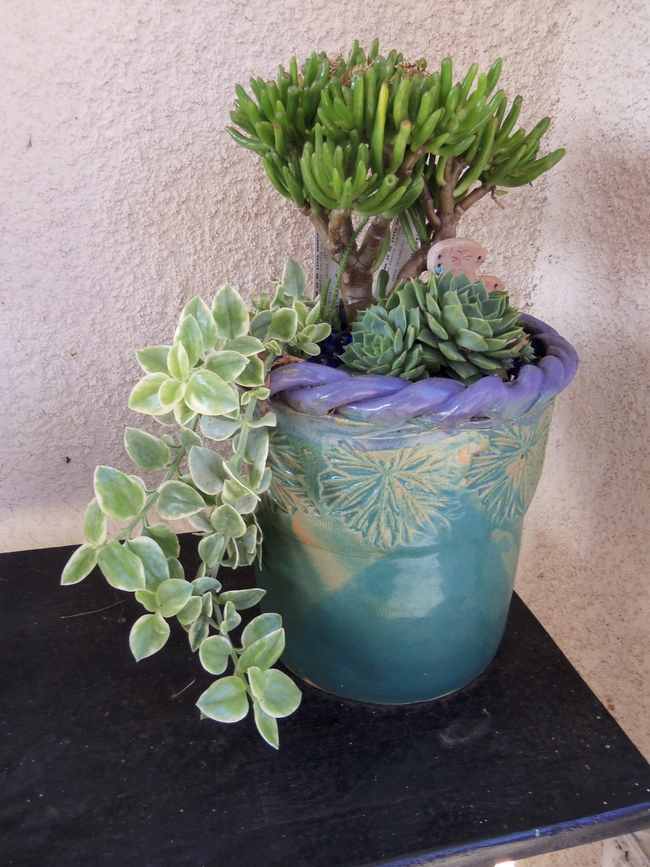How to protect your succulents from frost
Now that the weather is getting colder and now that I have added succulents to my garden containers, it is important to know how to protect them from frost. Usually perennials respond to winter cold by dying to the ground. In spring, their roots send out new growth. But many succulents from mild climates don't have this adaptation, and need special care when grown where temperatures drop below 32 degrees F.
Here are some tips from succulent photojournalist and author, Debra Lee Baldwin.
-- Don't peel away dry leaves attached to a succulent's trunk or stem. They protect it from temperature extremes (cold and hot).
-- Keep succulents on the dry side. Cells that are turgid are more likely to burst when the liquid within them freezes.
-- Move potted succulents beneath a deck, tree or eaves. (I try to tuck them next to the house in corners that are covered)
-- Place pots against walls, hardscape, boulders and/or shrubs that absorb and slowly release the day's heat. South- and west-facing exposures are best.
-- Drape succulents with frost cloth (sold at nurseries) or old bed sheets. Avoid plastic, which traps moisture, doesn't let plants breathe, and intensifies sunlight.
Should your succulents become frost-burned ~
-- Remove collapsed leaves only if it's likely they'll stay moist and decay. But if they'll protect the plant from future frost, leave on and prune in spring.
-- Preserve the geometry of slender-leaved succulents (such as agaves and aloes) by trimming tip-burned leaves to a point, rather than cutting straight across.
-- Chalk it up to experience. Now you know that particular plant is vulnerable and needs a protected location. (This is my gardening style that I am trying to improve by joining the Solano Master Gardener program).
